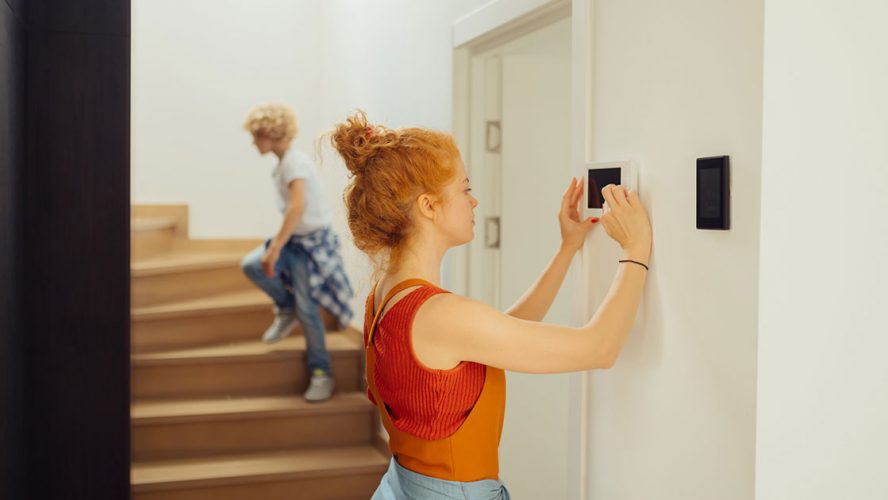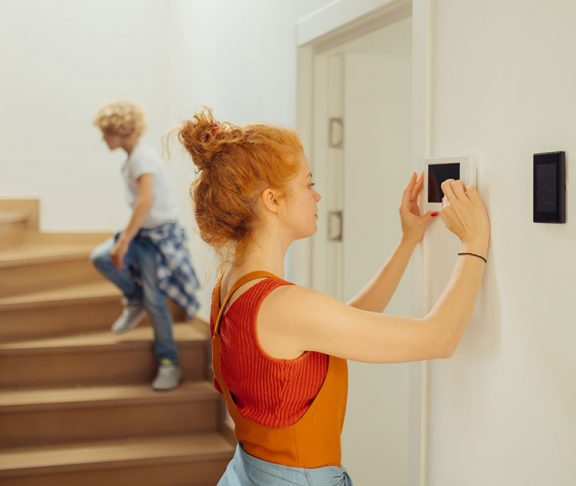Three experts discuss what makes smart automation so beneficial, and where they think it’s headed next.

Brad Hintze
Senior Director of Product Marketing, Control4
The term is growing in recognition, but the context behind it can get a bit confusing. Many think of home automation as “smart” devices; one app turns on a light, another app locks a door. However, it isn’t until these smart devices “play nicely” together that the magic of true smart home automation evolves. An example: One button press at night turns off the lights, dials back the thermostat and locks the doors. Another: When you walk through the door, the kitchen illuminates, starting your favorite playlist. From a tap on your phone, a keypad on the wall, a single voice command — or without any action at all — true home automation responds to how you live within your home.
In your own opinion, what are the main advantages of investing in a connected lifestyle?
It really depends on the individual homeowner. One homeowner may favor having an entertainment oasis with multi-room audio and distributed video. Another may prefer smart lighting that makes the house appear occupied while traveling. For me, the biggest advantage is the peace of mind I receive. If someone rings the doorbell, I’m able to see and communicate with them. If it’s an important delivery, I can tap a button that turns on the entry light, unlocks the door and locks it back up again after they have left. I get an alert when the kids arrive home, I can check in on the cameras and even close the garage if it has been left open.
Most homeowners struggle with the difficulty of a home automation set up. How do you think this will change in the near future?
Even though once it’s installed it is easy to operate, people should think of a home automation system in the same way they’d think of plumbing or electricity. It’s easy to use and live with, but it’s best left to professionals to install and program. However, leaving the installation to a professional shouldn’t limit the ability to change and personalize the automation. Control4 gives homeowners the flexibility post-install to further personalize their smart home after the foundation and structure are in place.
What are your thoughts on the upcoming future of smart home automation? What topics interest you the most?
Home automation is just hitting its stride, and the possibilities are virtually limitless. Voice control is one of the facets of the smart home that continues to expand, both in availability and sophistication. It’s a trend that is driving a lot of innovation and has loads of potential for homeowners. We’re also seeing a considerable need for a robust network, the backbone to any connected home; a true smart home cannot function effectively without one. And lastly, homeowner personalization, putting the flexibility and control into the hands of a homeowner to shape how their home responds to their lifestyle.
What are the first steps for men and women to implement smart technology in the home?
Start by stepping back and thinking about your daily routines. How do you relax? How do you prepare for the day? How do you get ready for bed? With that in mind, look for a smart home professional in your area, particularly one that offers a showroom you can visit to see the technology and possibilities for yourself. Don’t worry about getting it exactly perfect the first time. You can always expand your system over time, adding new capabilities as your needs and desires evolve and change.

Lesley Penater
Vice President of Marketing, Alain Pinel Realtors
How would you describe smart home automation to a person who’s never heard of it before?
Home automation has been around a long time. If your sprinkler system was on a timer or you plugged your lamps into an old-fashioned timer to turn them on and off at certain times, you could have considered yourself living in an automated home. Today, an automated home takes this concept to the next level. Smart thermostats controlled by your phone, Google Assistant accessible from any room in your home and a smart fridge that orders groceries when you run low on milk are all examples of taking home tasks and automating them for a new generation of homeowners.
In your own opinion, what are the main advantages of investing in a connected lifestyle?
The advantage is just that — staying connected. Like most people living in Northern California, I spend a bit of time in traffic. Opportunities to automate one’s home life offers the ability to be more present for other priorities. Whether it’s as simple as remotely adjusting the ideal temperature for your arrival at home (saving on energy costs in the interim, by the way) or being able to ask Google or Alexa to add household items to your online shopping cart while preparing family dinner, there is real value in what a connected lifestyle can provide.
Most homeowners struggle with the difficulty of a home automation set up. How do you think this will change in the near future?
While we can all enjoy the advantages of technological tools, not all of us are equipped to automate our own homes. We’re already seeing players in this space at opposite ends of the market. There are companies that specialize in converting luxury homes to automated environments, and you have big box stores that offer teams of tech folks who, for an hourly rate, will come to your home and set up your Wi-Fi and smart speakers. I think both ends of the market have room to grow, and you’ll see more competition on either side.
What are your thoughts on the upcoming future of smart home automation? What topics interest you the most?
Home automation isn’t a trend; it has been a progressive evolution for generations of homeowners. From the first telephone in the home, to the doorbell, to those timed sprinkler systems and, most recently, smart refrigerators, home automation will continue to advance and become ever more commonplace. As a mom, the home automation topics that intrigue me are those that innovate around the idea of automating mundane tasks to provide more time “offline” with the family. Smart fridges, omnipresent “assistants” and, yes, timers on lights and smart thermostats that help save a few dollars.
What are the first steps for men and women to implement smart technology in the home?
Having worked in Silicon Valley and the tech space for years, my advice for anyone thinking about bringing smart technology into the home is to think about your end goal first and work backward. Is your goal to “automate” those mundane tasks like grocery lists or streamlining your online shopping? Are you looking to lower your energy bills through smart tech? Are you going for the cool factor of creating a smart home to impress friends and family? Once you know the goal, you can more easily identify the right tools and resources to achieve that goal.

Dr. Renee Dua
How would you describe smart home automation to a person who’s never heard of it before?
Home automation is about finding ways to use novel, technology-driven solutions to make our day-to-day lives effortless while solving important problems. While it can be the voice assistant scheduling a doctor house call or sending a prescription refill, it can also be solutions that automate steps towards your comfort and convenience.
In your own opinion, what are the main advantages of investing in a connected lifestyle?
Investing in a connected lifestyle doesn’t mean you have the latest device just for the sake of it. Technology can build a bridge to some of the most important relationships, like your family physician. The Heal app, for example, allows patients to instantly connect to a qualified doctor at the tap of the button. The doctor can be in your own living room in two hours or less and see what in your house may be affecting your health. On top of the personal benefits, there is a larger impact on the healthcare system. Quality, proactive care that is driven through connected devices can improve patient outcomes, enable doctors to practice relationship-based medicine and reduce emergency room and hospital visits, all while lowering overall healthcare costs.
Most homeowners struggle with the difficulty of a home automation set up. How do you think this will change in the near future?
Integration of home automation is becoming easier and easier. In fact, Heal created a plug-in device that is 4G-enabled to communicate a patients’ vital signs to the doctor. Once a patient is able to integrate their home life so easily with their wellness tracking, such efforts as automation become mindless but necessary.
What are your thoughts on the upcoming future of smart home automation? What topics interest you the most?
The influx of automated health platforms presents the possibility of a long-term shift toward more precise, more proactive healthcare. Earlier this year, we announced the addition of a remote monitoring device that integrates over 100 disconnected, siloed medical tools that provide real-time, 24/7 integration of diagnostic health data. Doctors then have access to information that allows them to know a patient needs care even before they know they need it. We are interested in offering people integrated, cost-effective, comprehensive healthcare through automation and technology.
What are the first steps for men and women to implement smart technology in the home?
Before implementing any smart technology, it’s worth asking, “How will this improve my life, my relationships, and overall well-being?” Only then is it worth incorporating into your home and life.

